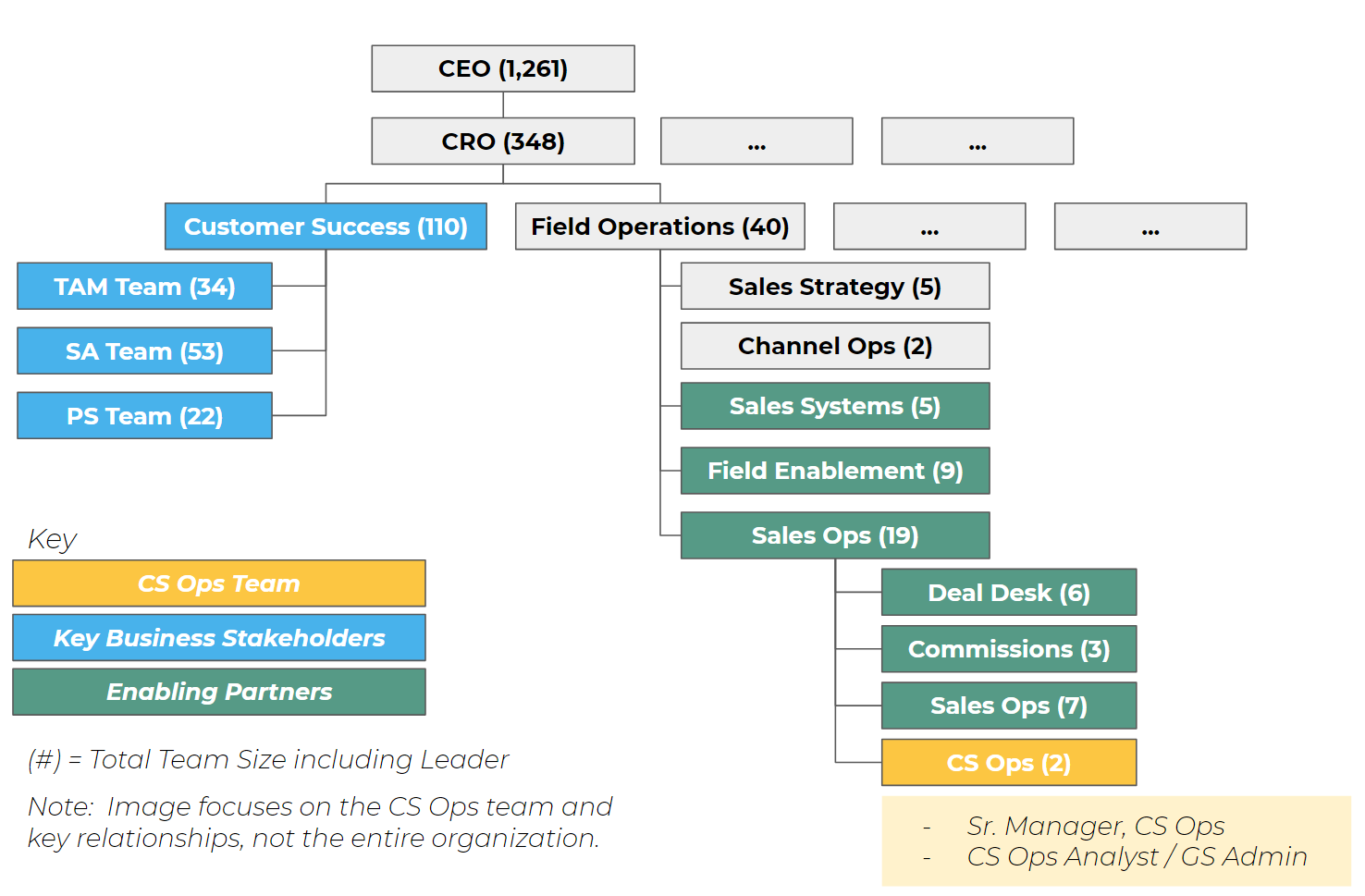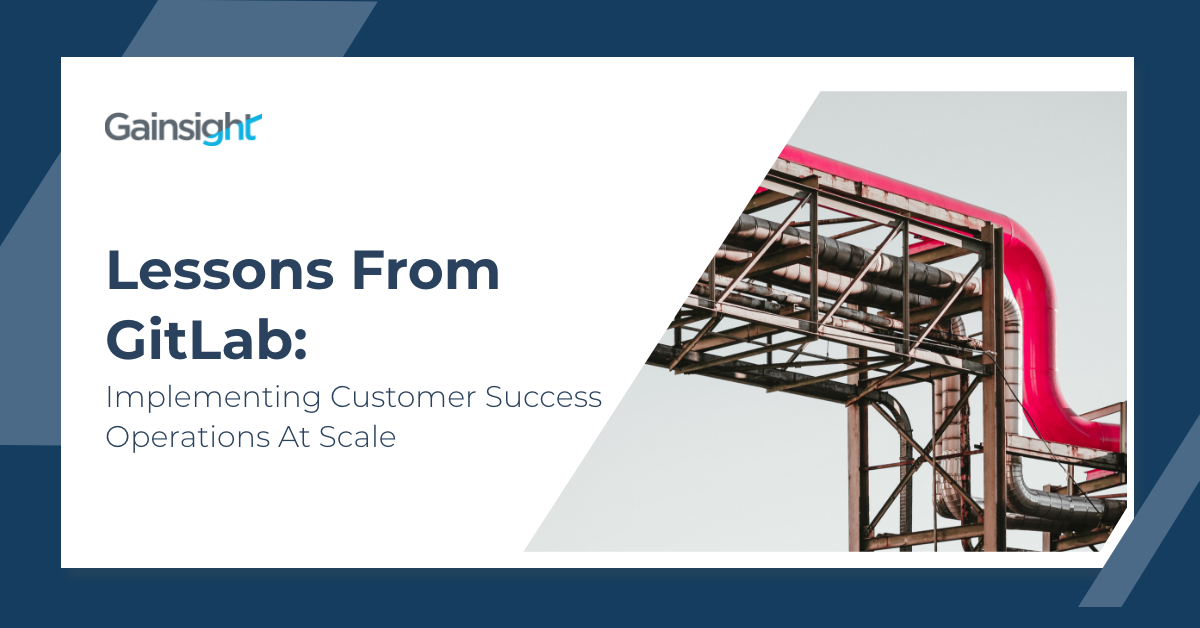As the Customer Success function matures, it’s increasingly clear that Customer Success Operations (CS Ops) plays a critical role in driving effectiveness and efficiency just as Sales Ops does for the Sales function. We’re interviewing a few rockstar CS Ops leaders to showcase how leading organizations drive growth and efficiency across their post-sales teams.
Today, we’re talking to Jeff Beaumont from GitLab. GitLab is an open-source, code-collaboration platform for git repository management, code reviews, issue tracking, wikis, and continuous deployment tools, enabling users to create, review, and deploy codes. Jeff is the Senior Manager of Customer Success Operations.
Finally, GitLab is a “handbook-first” company with a company-wide commitment to clear documentation and transparency – not only within the company but publicly. In several places, we’ll include links to more detailed CS Ops strategy and process resources that GitLab maintains (in their instance of GitLab!)
What was your journey to CS Operations? What experiences have helped you with this role?
I started my career as a CPA and spent seven years in accounting and financial planning. I transitioned to a software company focused on financial planning. I began as the Director of Support, then took on Customer Success, then Onboarding. I moved to another software company (also in the financial planning space) to start their CS program from scratch.
These experiences leading Customer Success gave me a lot of insight into the importance of CS operations to enable scale. I was the “consumer” of CS Ops. I saw first hand how ops could help my team, or the lack of ops could stunt our progress. And I was often involved in CS ops projects, but as a “side gig.”
At Gitlab, I switched to become the “producer” of CS Ops. I think my past experiences as a CS Leader were a huge asset. It allowed me to understand my key stakeholders’ needs because I’ve been in their shoes before. Those insights allowed me to gauge the needs of a CS leader and CS organization. And I love digging into the details of those needs – figuring out what we need to do from a systems and process perspective to meet those needs.
The Why: What’s the purpose and focus of CS Ops at Gitlab?
Let’s start with our mission statement: Customer Success Operations exists to create trust, predictability, and excellent customer outcomes through clear and efficient processes, consistency, and analytics.
To deliver on this mission, CS Ops creates and updates existing processes for the Customer Success organization and oversees:
- Systems implementation and maintenance
- Operational reporting
- Systems enablement
- Operationalizing Customer Success Journeys
More specifically, the purpose of CS ops is to support our three key customer-facing teams – Technical Account Managers (TAM), Solution Architects (SA), and Professional Services (PS).
As a result of connecting with these teams, we align on priorities. Often, these priorities start with the leader. He/she identifies a gap, an opportunity, or an idea and CS Ops works with them to define the specifics. For example, our VP of CS wanted to improve how we connect with key customer contacts and heard about Gainsight’s Stakeholder Alignment best practice. Alternatively, CS Ops comes to the business leaders with a proposal. For example, we wanted to improve our Product Analytics to help TAMs better understand their customers and potential risks.
A key success factor is how to showcase the value of CS ops and CS ops projects. The more you can tie to specific business goals or metrics, the better. With the Product Analytics project, it was necessary to connect how Product Analytics insights would help TAMs identify and address risks earlier to save customers at risk of churn.
Learn more about GitLab’s CS Ops purpose and focus:
The How: What Does CS Ops Do to Execute on the Priorities?
Here’s where CS Ops fits within the org chart:

There are two primary sets of working relationships. First, we work with the business leaders to align on their broad set of goals. Together, we’ve mapped out a three-year roadmap for the CS org. Based on this long term roadmap, we translate specific goals into projects that become Epics tracked in GitLab.
Here’s our Roadmap (PDF link)
For each goal, we need to:
- Define the Requirements – What does success look like for the Business leader?
- Design the program/process – I work closely with our Gainsight Admin, Caitlin, to map out what the Gainsight Platform and Users need to do.
- Configure Gainsight – Caitlin owns set up and testing within Gainsight.
- Enable Our Teams – CS ops and our Field Enablement team share this responsibility
- General Enablement – Owned by Field Enablement, which focuses on the business goal and showing how a particular initiative fits into the bigger picture.
- Systems Enablement – Owned by CS ops and focused on specific training on what happens in Gainsight and how to use Gainsight to achieve the business goal.
I also meet weekly with the TAM leaders, SA, and PS teams to review status, blockers, and changes in priority for our projects.
A critical component of the long term planning and the weekly meetings is representing what is NOT currently prioritized. The asks of the Ops team will always be much larger than the capacity of the team. A key part of my role is to show what else we could be doing, the potential benefits, and the incremental resources required.
The second set of working relationships is with the larger Field Operations organization that CS Ops is a part of. We have a weekly Global Operations meeting where all Ops people can understand and discuss our peers’ priorities, identify dependencies, and address blockers.
Ultimately, we synthesize all of these discussions and decisions into a CS Ops Project Board on GitLab. This is a public board where anyone (inside or outside GitLab) can see precisely what CS Ops is focused on.
CS Ops Project Board translates the high-level roadmap into discrete steps:
Learn more about GitLab’s Org and current CS Ops Projects
What other advice do you have for CS Ops teams?
I’m sure most companies are currently planning for next year. I’ve thought a lot about how CS ops is a key driver of the annual planning process in a few specific ways.
- I act as a consigliere where I advise CS Directors and our VP on what is/isn’t possible from an operational standpoint, give estimates on deadlines for new systems (like deploying Gainsight’s Stakeholder Alignment feature). Effectively, Operations needs to provide visibility and a roadmap to leaders on what is and isn’t possible.
- Use data to help fashion a story around how last year went, where we are currently, and where we are headed. Not all charts need to look like skyrocketing success or dismal failure unless we do X. But help your VP/Director understand what has transpired and all the interrelated aspects.
- Headcount planning and modeling: we need to think through what headcount looks like and developing proper models for what a fully loaded CSM looks like. Is it just ARR? What about growth potential, the complexity of the account? Do you align the CSM to specific sales execs?
- Today’s headcount needs are based on the forecast we need a plan that accounts for hiring/ramping.
- Look around the curve. We couldn’t see COVID coming as that’s more of a black swan event, but we could think about what the subsequent year looks like with activities happening in different teams — such as if Product is launching something new, how will that impact CS? If Gainsight now tracks product usage, how can that assist Sales?
- Help keep planning on schedule. There’s a lot to do, and we need someone to manage the process.
We hope learning more about the GitLab CS Ops process helps start you on the right path to building out your own. Gainsight is here to help you stand up the best CS function at your company. Reach out to us as you make your plans for a better 2021.

